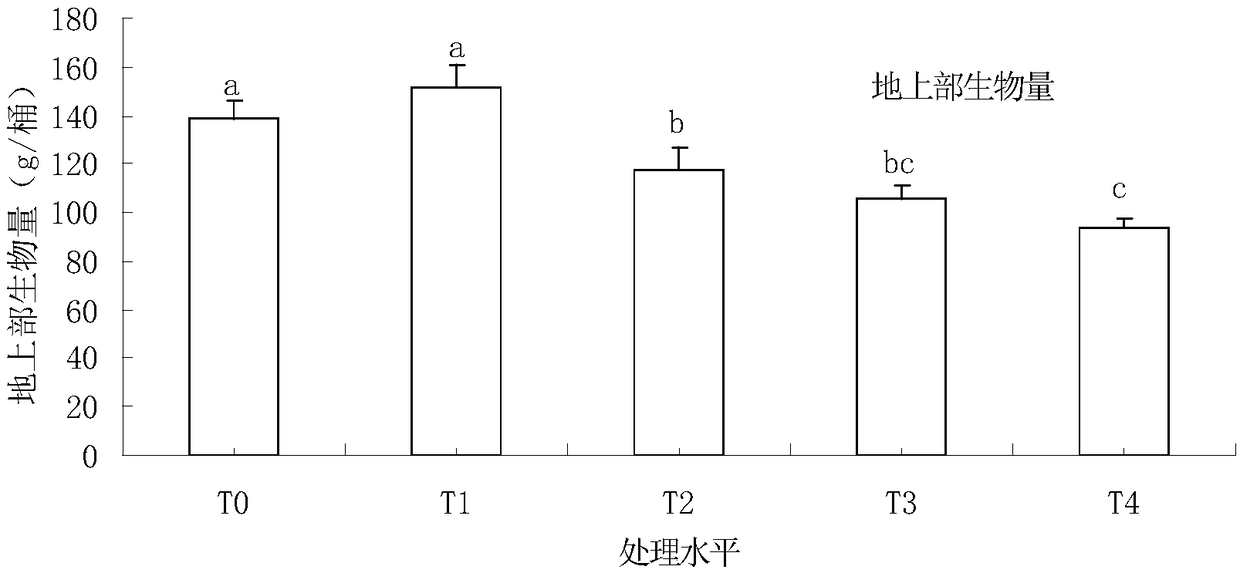Method for repairing zinc polluted soil and sludge by using aster subulatus
A technology of polluted soil and aster, which is applied in the restoration of polluted soil, biological sludge treatment and other directions, can solve the problems such as the restoration of zinc-contaminated soil and sludge, time-consuming and labor-intensive, etc., which have not yet been repaired by aster, so as to achieve wind diffusion. Strong ability, low cost, and the effect of repairing Zn content
- Summary
- Abstract
- Description
- Claims
- Application Information
AI Technical Summary
Problems solved by technology
Method used
Image
Examples
Embodiment 1
[0021] The experiment was carried out in the net room greenhouse in the core area of scientific research and experiment of Guangxi Academy of Agricultural Sciences.
[0022] The experiment was carried out in a barrel planting simulation method. The soil was taken from the top layer soil of the experimental field of Guangxi Academy of Agricultural Sciences, and the heavy metal Zn was added to the soil at a gradient concentration. The Asteraceae plant of the genus Asteraceae was planted in the Zn-contaminated soil by direct transplanting. . There are 5 treatments for polluted soil. The application concentration was 0 mg / kg (T0), 200 mg / kg (T1), 400 mg / kg (T2), 600 mg / kg (T3), and 800 mg / kg (T4). The applied heavy metal form is analytically pure ZnSO 4 ·7H 2 O, add soil in a solid form, fully mix well, water and soak, so that the added heavy metals and soil are fully balanced and aged, and transplanted after 1 month, each treatment is repeated 3 times, 3 plants per bucket, ...
Embodiment 2
[0029] In early April 2018, Aster subulatus Michx. was planted in the soil with heavy metal Zn pollution concentration of 456.5 mg / kg by direct seeding under natural conditions; the row spacing of direct seeding was 25 cm × 25 cm. After 120 days, harvest the aboveground part of the plant, and the heavy metal Zn content in the aboveground part is measured to be 1519.6mg / kg. Centralized ashing treatment is carried out on the harvested asters from the soil, and then the ashes are safely buried or used as raw materials for Zn extraction.
Embodiment 3
[0031] In late June 2017, by direct transplanting, Aster subulatus Michx. was planted in sludge polluted with heavy metal Zn of 855.7 mg / kg under natural conditions. The seedling height of the transplanted Aster basilica seedlings was 7-10cm, and the distance between plants and rows was 20cm×30cm. After 95 days, the aboveground part of the plant was harvested, and the heavy metal Zn content in the aboveground part was measured to be 4738.4mg / kg. Centralized ashing treatment is carried out on the harvested asters from the soil, and then the ashes are safely buried or used as raw materials for Zn extraction.
[0032] It can be seen from the above-mentioned Examples 1, 2 and 3 that the present invention can obviously absorb the heavy metal Zn in the polluted soil by planting Aster asteria in the heavy metal polluted soil, thereby achieving the purpose of effectively repairing the heavy metal Zn polluted soil and sludge.
PUM
 Login to View More
Login to View More Abstract
Description
Claims
Application Information
 Login to View More
Login to View More - R&D
- Intellectual Property
- Life Sciences
- Materials
- Tech Scout
- Unparalleled Data Quality
- Higher Quality Content
- 60% Fewer Hallucinations
Browse by: Latest US Patents, China's latest patents, Technical Efficacy Thesaurus, Application Domain, Technology Topic, Popular Technical Reports.
© 2025 PatSnap. All rights reserved.Legal|Privacy policy|Modern Slavery Act Transparency Statement|Sitemap|About US| Contact US: help@patsnap.com


